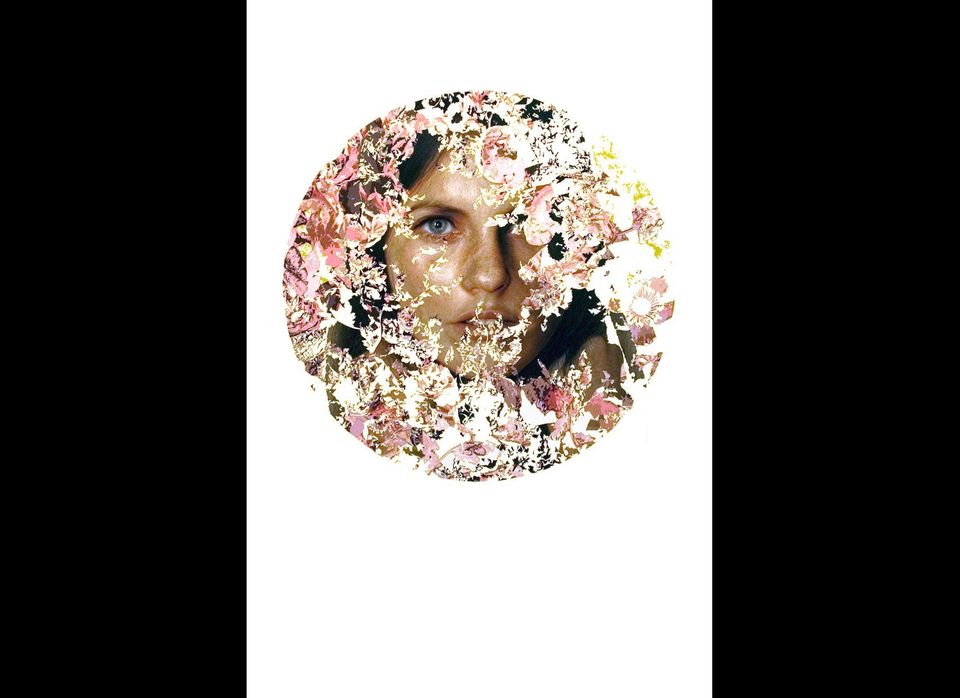Painter Ryan Bradley has co-curated, with Jenny Mushkin-Goldman, "The Space Between," a group show devoted to a fertile formal premise: the foregrounded use of negative space in figurative art. As it happens, all of the work in the show interprets negative space as white area, generally of complex shape.
That Bradley helped create this idea for a show comes as no surprise. His own work involves the fine subdivision of space excised from depictions of the figure. He makes enormous portraits of fashion models, and then removes the shapes of lacy patterns or floral arrangements from them. This method depends on technical perfection for its apparent lightness. The lightness conceals iron discipline and obsession.
Although Bradley has focused on these particular qualities of negative space in his own work -- the seemingly incompatible feathery effortlessness and brutal workload of iterated complexity -- he takes a broad view of the potential of the subject in his curation. Adam Kreuger's "Fly in the Ointment" comes closest to the explicit formalism of Bradley's work, with its flawless painting and immaculate cutting away of negative shapes; and Noah Becker's oversized self-portrait displays, like Bradley's work, a single-minded focus on the terrain of the face in a floating, aggressive null-space.
Stepping away from these emphases, one finds the use of negative space as a narrative element, serving to depersonalize the officers in Jason Maas's "Mounted Patrol." One sees negative space as just one among many compositional elements deployed in Alfred Steiner's comic-but-threatening "The Penis of the Elected Never Softens." In Reuben Negron's "Embrace III," negative space serves as an emotional quantity, acting as a couple's self-exclusion from all parts of the universe except one another. And finally, in Jason Bard Yarmosky's lovingly detailed portrait "Old Salt," we come to the pole of negative space directly opposite Bradley's: a fluid and invisible part of the natural process of drawing itself. If Bradley's negative space is pure formalism, Yarmosky's is totally organic.
Key to interpreting "The Space Between" is the idea that the negative space premise is a formal, not a conceptual, proposition. This property is often observed in the more populist work of young painters emerging from academic training or orientation. It's easy to confuse the two, formalism and conceptualism -- but high-rendering figurative people have a very hard time grasping or committing to conceptualism, even when they want to.
This is not a knock. I think this kind of formal parameter-setting inspires a lot of creativity. Looking at the show as a single body of work, one gets a poppy, caffeine and sugar rush feeling. When I was in high school, I knew some guys from a boarding school for extremely gifted science students. The boys made TNT one time, to dynamite their way into the girls' dorm. A similarly precocious, running-in-the-hallways excitement animates this show. A lot of places I turn in the art world, I see exhaustion and repetition. I think the young figurative people willing to operate outside of a strict academic image catalog exhibit some of the most promising spirit going.
The Space Between
Gregg Galleries/National Arts Club
15 Gramercy Park South
December 3-14, 2012
